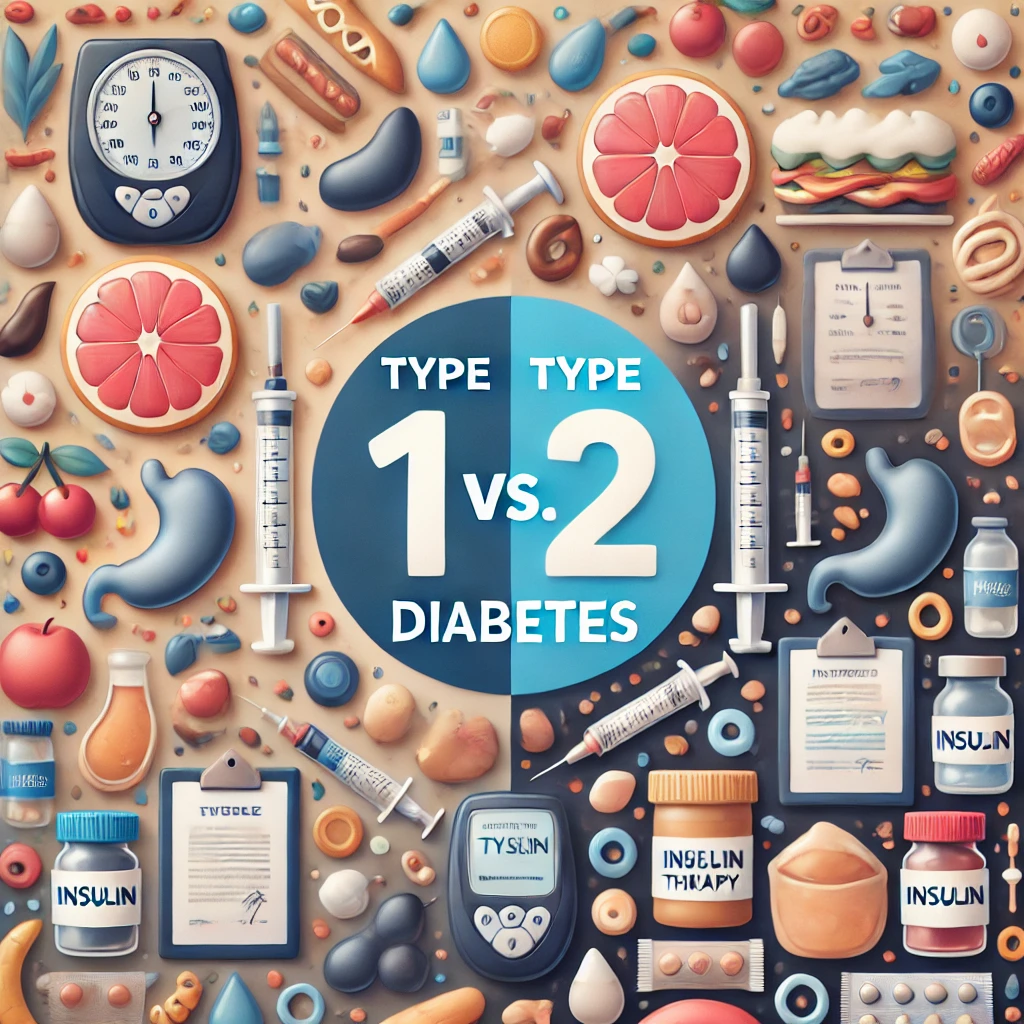💊 Type 1 vs. Type 2 Diabetes
Type 1 and Type 2 Diabetes are both chronic conditions characterized by high blood sugar levels due to problems with insulin. But that’s about where the similarities end. Type and Type 2 diabetes have different causes, risk factors, pathophysiology, and clinical presentation. The one most people have to worry about, is Type 2 Diabetes.
Type 1 Diabetes
- This is an autoimmune disorder where the immune system attacks the insulin-producing beta cells of the pancreas, leading to absolute insulin deficiency.
- This condition accounts for about 5-10% of all diabetes cases and it usually presents in childhood beacuse it only takes a few years for the immune system to destroy the pancreas. But it can develop at any age depending on the specifics of each situation (onset of the disease, etc).
- The main risk factor for Type 1 Diabetes is genetic predisposition: with certain HLA genes increasing susceptibility, and environmental triggers like viral infections.
- Clinically presentation: Type 1 diabetes typically presents with very sudden symptoms such as excessive thirst (polydipsia), frequent urination (polyuria), unintended weight loss, fatigue, and blurred vision. Due to the lack of insulin, patients may also experience diabetic ketoacidosis (DKA), a potentially life-threatening complication marked by high blood sugar, ketones in the blood or urine, and acidosis.
Type 2 Diabetes
- Type 2 Diabetes, on the other hand, is primarily a metabolic disorder characterized by insulin resistance, where the pancreas does produce insulin, but the body’s cells do not respond properly to it.
- Type 2 diabetes accounts for about 90-95% of all diabetes cases and it typically presents in adults following an unhealthy life style.
- Risk factors strongly associated with Type 2 Diabetes lifestyle include obesity, poor diet, physical inactivity, and family history. Type 2 Diabetes is increasingly diagnosed in children and adolescents, especially with the rise in obesity rates.
- The pathophysiology of Type 2 diabetes is more complex, involving a complicated interplay between genetic factors, lifestyle choices, and chronic inflammation that impairs insulin signaling. It takes about 3 years of medical school before students really start wrapping their head around the complexity of the disease.
- Clinically, Type 2 diabetes often presents more insidiously, with symptoms like increased thirst, frequent urination, fatigue, and slow-healing wounds, but many individuals may be asymptomatic or have mild symptoms for years before diagnosis. Unlike Type 1, ketoacidosis is rare in Type 2 diabetes, but these patients are at risk for hyperosmolar hyperglycemic state (HHS), a serious complication characterized by extremely high blood sugar levels and severe dehydration.
Complications of Type 1 and Type 2 Diabetes
I suppose the list of complications is the other thing these two disorders have in common: Both types of diabetes lead to cardiovascular disease, neuropathy, retinopathy, and kidney disease. Early diagnosis and tailored management are essential for preventing these long-term complications and maintaining quality of life.
🤔 Why you need to know:
Because Type 2 diabetes can be acquired via an unhealthy lifestyle.
- Prevention: There is no known way to prevent Type 1 diabetes, but Type 2 diabetes can often be prevented or delayed through healthy lifestyle choices such as maintaining a healthy weight, eating a balanced diet, and staying active.
- Don’t forget yearly bloodwork!
🧠 Trivia:
While Type 1 diabetes was once known as “juvenile diabetes” because it primarily affected children and teenagers, Type 2 was called “adult-onset diabetes”. These names are now outdated.



